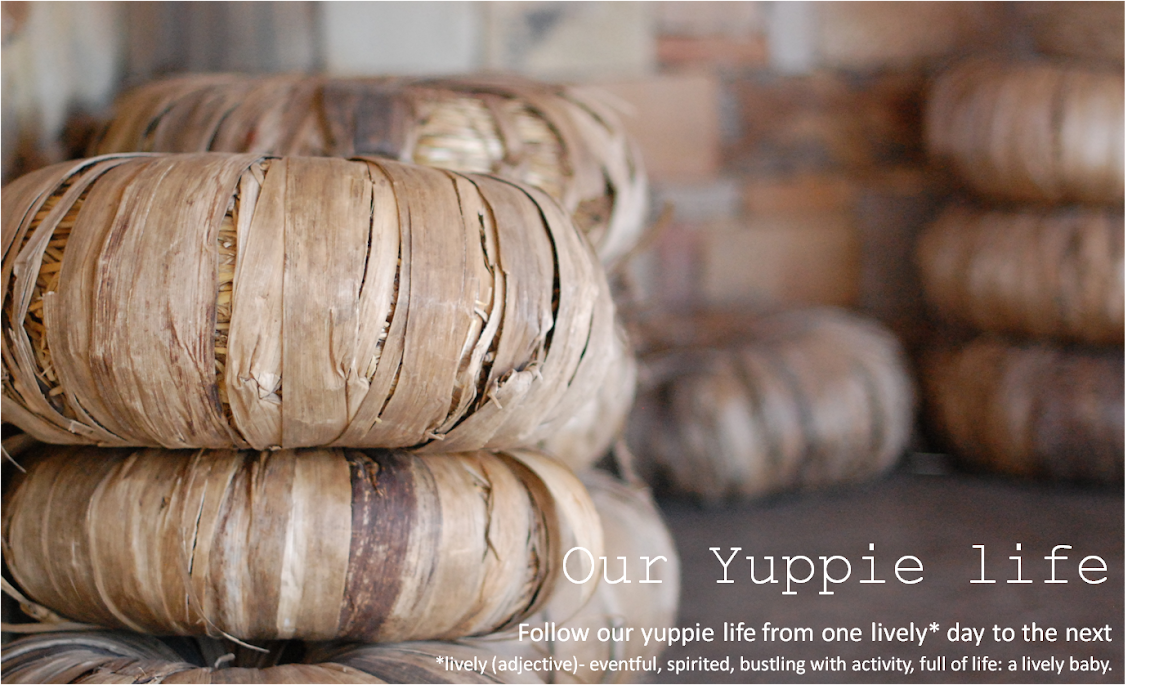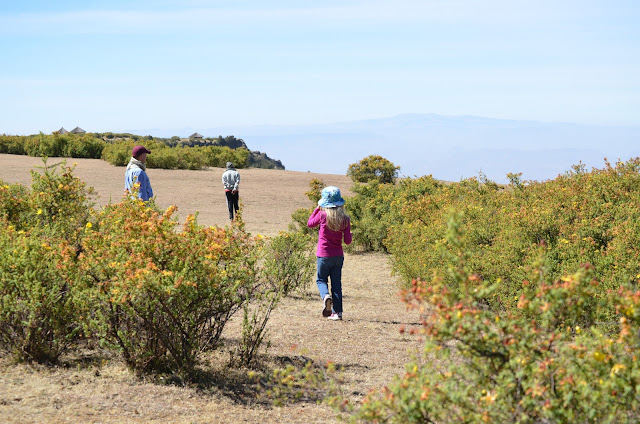My sister and I cooked constantly while she was visiting. I guess I'm always cooking constantly now that I think about it. But when I am inflicting that much time in the kitchen on a guest, it opened my eyes to just how much time it really is. Some days, breakfast meshes into lunch and then shortly after is the prep for dinner and any baking gets squeezed in between and what do you know? The entire day is spent in the kitchen. I don't mind. I love it. Megan was a good sport about it too. She's the perfect assistant. And in all honesty, it's not like there is a whole lot else going on in Addis Ababa at any given moment. So anyway, we cooked a lot and this recipe is a new one I tried while Megan was here.
 I've made this creamy mushroom polenta twice now and I have to share it with you. It's delicious, easy and a nice alternative to the same old potatoes or rice that accompany most things, most nights for dinner. It can get old, am I right? The trick to getting this dish flavorful, is having good broth to cook the polenta in. If you cook polenta in water it's going to be bland and flavorless. Using broth adds depth.
I've made this creamy mushroom polenta twice now and I have to share it with you. It's delicious, easy and a nice alternative to the same old potatoes or rice that accompany most things, most nights for dinner. It can get old, am I right? The trick to getting this dish flavorful, is having good broth to cook the polenta in. If you cook polenta in water it's going to be bland and flavorless. Using broth adds depth. If you're the type of person who buys mushrooms because you like them but they usually end up either slimey or dried out in the back of the fridge; this is the perfect dish for you. First of all, store mushrooms in a paper sack that can breath. Plastic bags create slimey mushrooms. Grab those old (1-2 weeks old not two months old) shriveled mushrooms and put them in about 3-4 cups of water and boil to make a mushroom broth. Use this broth for creamy mushroom polenta, mushroom barley soup or risotto.
Creamy Mushroom Polenta (my adaptation from the original recipe found in A recipe a day, 365 Recipes)
Cook time: 15 minutes
Serves 2-4 adults, depending on portion size
1 medium white onion chopped finely
1-2 Tbsp olive oil
salt and pepper
3 cups warm broth (mushroom, chicken, turkey or vegetable)
6 oz or roughly 3/4 cup polenta
2 tsp chopped fresh rosemary
1 big handful of largely diced button mushrooms (fresh or canned)
1/2 cup graded or chopped cheese (provolone and Parmesan)
Heat the oil in a dutch oven or large pot. Add the onions and a pinch of salt and saute until the onions are translucent. Add the broth and bring to a slow boil. Whisk the polenta into the broth and stir. Add the rosemary and turn the temperature down to let it simmer for 5-10 minutes covered with a lid. The polenta should be thick and creamy at this point. If it's too thick add a bit more broth or water (1/4 cup at a time). Taste for salt and pepper. Right before serving, stir in a portion of the cheeses and mushrooms. Sprinkle the remaining cheese and mushrooms on the top for garnish. Best served hot right from the dish. If allowed to cool to room temperature the polenta will harden a bit. It still tastes great but you won't get that smooth texture.
























































